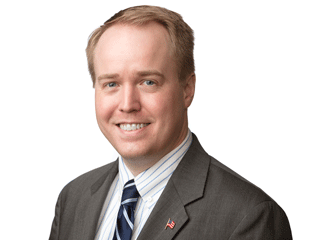Performance Monitoring & External Relations Committee: Members & Responsibilities
The Performance Monitoring & External Relations Committee is accountable for overseeing STA operational and financial performance, for updating of STA (non-governing) policies meriting Board attention, and for building a positive STA public image and maintaining relationships with the community at large and key stakeholders, in this capacity:
- Reaching agreement with the Chief Executive Officer on the key elements of an operational and financial reporting process, including the content, format, and frequency of performance reports to Board, and overseeing implementation of the process.
- Designing processes for gathering performance information other than formal reports, such as Board member facility visits.
- Reviewing performance reports in Committee meetings and reporting operational and financial performance to the Board at its regular business meetings.
- Reviewing operational policies meriting the Board’s attention (such as policies to govern STA financial management, contracting, and the like), identifying the need for revision, and recommending policy revisions to the full Board.
- Presenting an overall assessment of the past year’s operational and financial performance at annual strategic planning work sessions involving the full Board of Directors.
- Providing counsel to the Chief Executive Officer on major internal administrative system upgrades (e.g., a major MIS upgrade) involving significant costs.
- Ensuring that STA’s desired image is regularly updated.
- Overseeing the development and implementation of strategies for STA image building, marketing and public relations and for maintaining close, positive relationships with key external stakeholders.
- Overseeing the development and implementation of legislative/governmental relations policies and strategies.
- Recommending to the Board positions on legislative issues.
- Coordinating Board member speaking in appropriate forums on behalf of STA.
- Fashioning strategies and plans intended to enhance external communication.
- Approving Scopes of Work for Contracts in excess of the Chief Executive Officer’s authority.
- Recommending to the Board of Directors award of contracts in excess of the Chief Executive Officer’s authority.
The Board of Directors Chair will nominate the voting chairs and members of the Planning & Development and Performance Monitoring & External Relations Committees to an annual term, subject to Board confirmation.
During every year of appointment as a Director, each Board member shall serve as a voting member of either the Planning & Development Committee or the Performance Monitoring& External Relations Committee, with the exception of the Chair who shall only serve on the Board Operations Committee. No Director shall serve on the Planning & Development and the Performance Monitoring & External Relations Committees at the same time, with the exception of a Director attending a Committee meeting as an alternate pursuant to Section 6 below. This will ensure that each Governing Committee has a “critical mass” of voting Board members and will guard against Board members’ overextension and the dilution of governance.
The Chief Executive Officer is an ex officio, non-voting member of all Board Governing Committees and should whenever feasible attend Committee meetings.
The non-voting labor representative Director shall be nominated by the Board of Directors Chair to serve as an ex officio, non-voting member of either the Planning & DevelopmentCommittee or the Performance Monitoring & External Relations Committee, subject to Board confirmation.
Committee action will be taken by a vote of the eligible voting members. A quorum for the purpose of conducting committee business consists of two voting members. No GoverningCommittee shall have more than four (4) Directors in a voting position. In the event that more than four Directors must be appointed to any Governing Committee in order to satisfy representation requirements set forth in the Bylaws or a Board resolution, the Board, by majority vote of those voting on the motion, shall specify which Director will serve on such committee in an ex officio, non-voting role.
Only Directors or their designated alternate may serve as members of the Planning &Development or Performance Monitoring & External Relations Committees. A designated alternate is the Director’s Board alternate or any other Director from the same jurisdiction.
The Board Governing Committees may create advisory sub-committees consisting of non-Directors to assist them in carrying out their responsibilities.
It is recommended that, to qualify as a Governing Committee chair, a Board member should have served at least a year as an active member of that Committee (after the Committee structure has been in existence for two years).
Board members should make a commitment to attend Committee meetings regularly, be prompt and be prepared.
All matters coming to the full Board should go through the appropriate Governing Committee and be introduced by Committee members. No action items should be introduced directly to the full Board, without having come through the appropriate Board Governing Committee, and all reports to the Board should be made by Governing Committee members (with the sole exceptions of the regular Chief Executive Officer report to the Board and when non-board advisory sub-committee members or staff members present special briefings under the aegis of the Governing Committees).
Committees should meet far enough in advance of the regular Board meeting that Committee recommendations can be prepared in a full and timely fashion for transmittal to the full Board. Committee meetings should never be held in conjunction with the regular Board meeting since this would lead to ritualistic, rather than substantive, Committee sessions.
Members

Council Member Lance Speirs
Chair Performance Monitoring & External Relations Committee
Chair Pro Tempore
City of Medical Lake
P.O. Box 369 Medical Lake, WA 99022
Council Member Michael Cathcart
City of Spokane
808 West Spokane Falls Blvd., Spokane, WA 99201

Council Member Zack Zappone
City of Spokane
808 West Spokane Falls Blvd., Spokane, WA 99201

Council Member Hank Bynaker
Ex-Officio
City of Airway Heights
1208 South Lundstrom, Airway Heights, WA 99001

Council Member Dan Sander
Ex-Officio
City of Millwood
9103 E Frederick Avenue, Millwood, WA 99206



